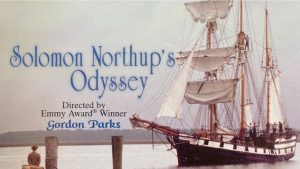 Weird Stuff
Weird Stuff  Weird Stuff
Weird Stuff  Our World
Our World 10 Ways Your Christmas Tree Is More Lit Than You Think
 Movies and TV
Movies and TV The 10 Coolest Stars to Set Sail on The Love Boat
 History
History 10 Things You Didn’t Know About the American National Anthem
 Technology
Technology Top 10 Everyday Tech Buzzwords That Hide a Darker Past
 Humans
Humans 10 Everyday Human Behaviors That Are Actually Survival Instincts
 Animals
Animals 10 Animals That Humiliated and Harmed Historical Leaders
 History
History 10 Most Influential Protests in Modern History
 Creepy
Creepy 10 More Representations of Death from Myth, Legend, and Folktale
 Technology
Technology 10 Scientific Breakthroughs of 2025 That’ll Change Everything
 Weird Stuff
Weird Stuff Ten Bizarre Facts About The Doge Meme
 Our World
Our World 10 Ways Your Christmas Tree Is More Lit Than You Think
 Movies and TV
Movies and TV The 10 Coolest Stars to Set Sail on The Love Boat
Who's Behind Listverse?

Jamie Frater
Head Editor
Jamie founded Listverse due to an insatiable desire to share fascinating, obscure, and bizarre facts. He has been a guest speaker on numerous national radio and television stations and is a five time published author.
More About Us History
History 10 Things You Didn’t Know About the American National Anthem
 Technology
Technology Top 10 Everyday Tech Buzzwords That Hide a Darker Past
 Humans
Humans 10 Everyday Human Behaviors That Are Actually Survival Instincts
 Animals
Animals 10 Animals That Humiliated and Harmed Historical Leaders
 History
History 10 Most Influential Protests in Modern History
 Creepy
Creepy 10 More Representations of Death from Myth, Legend, and Folktale
 Technology
Technology 10 Scientific Breakthroughs of 2025 That’ll Change Everything
10 Book Adaptations You Forgot About
Books are an excellent source of inspiration for filmmakers. If they take a literary classic and adapt it to the screen, they practically guarantee the project’s success. After all, the story already works on the page, so all the screenwriters have to do is translate it. Doing so will put the movie, TV show, or video game in the same high regard as the source material. The process is a surefire path to a hit, but that’s not always how it pans out.
Some book adaptations fade into obscurity. Often, creative missteps prevent them from landing with their target audience. That initial failure nixes any prospect of longevity. Even if they garnered a positive reception at the time, they might be overshadowed by another attempt. That’s a shame, as many of these adaptations are worth remembering. Fans might actually prefer them to the mainstream options. If not, at least it’s intriguing to see a different take on the same material.
Related: Top Ten Worst Book to Movie Adaptations Ever Filmed
10 The Lord of the Rings (1978)
The Lord of the Rings is one of the most beloved epics of all time. J.R.R. Tolkien’s seminal trilogy redefined the fantasy genre with unbelievable passion. Although it told a familiar tale about a group of heroes who were out to destroy an evil artifact, the journey was so dense and detailed that people considered it to be unfilmable. That was until Peter Jackson’s knockout movie trilogy. Released from 2001 to 2003, these flicks adapted each entry as a three-hour odyssey, capturing Tolkien’s world in a way that previous versions never could.
Several stabs at The Lord of the Rings came throughout the 1970s, 1980s, and 1990s. Some of them were radio dramas, while others were foreign TV specials. The only English attempts to materialize onscreen were 1978’s The Lord of the Rings and 1980’s The Return of the King. The former adapted the first two books with a mix of rotoscoping and traditional animation. The latter was a cartoonish take on the trilogy’s conclusion. Neither was received well, and both were utterly overshadowed by Jackson’s monumental magnum opus. One film to rule them all.[1]
9 The Chronicles of Narnia (1988)
Nearly as famous in the literary landscape is The Chronicles of Narnia by C.S. Lewis. These books involve a group of kids who stumble into a medieval fantasy realm and become prophesied heroes. Like its contemporary, it saw a cinematic treatment, albeit with lesser results. Three of the seven books got blockbuster adaptations in 2005, 2008, and 2010. Despite their downplaying the novels’ Christian themes and earning diminishing box office returns, these big-budget flicks depicted Lewis’s vibrant realm with all the majesty that modern filmmaking could provide. Up to that point, it had been limited to television.
The Chronicles of Narnia had a few TV portrayals prior to the films, but they also failed to cover the whole saga. The Lion, the Witch, and the Wardrobe was the most popular chapter, seeing renditions in 1967 and 1979. Later, it and three other entries were the subject of a serial from 1988 to 1990.
Since these works obviously didn’t have the benefit of CGI or Hollywood budgets, they relied on animation, animatronics, and puppets to bring Narnia to life. Considering the fuzzy critters filling the place, these tricks added up to reasonable praise at the time. However, the big-screen versions were more widely accessible and, therefore, occupied a greater place in history.[2]
8 The Pillars of the Earth (2017)
Even as historical novels go, The Pillars of the Earth is thick. Chronicling a cathedral against the backdrop of an English civil war, Ken Follet’s work is simply too long to fit into a film. That’s why the only prominent attempt was a miniseries. Airing in 2010, this show covered most of the story in its eight episodes. The creators may have abridged certain elements, but the cable TV budget let them craft the cathedral with cinematic quality. It even spawned a sequel series about Follet’s following book, World Without End. Of course, it didn’t have a monopoly on the author’s work.
A few years later, a Pillars of the Earth game arrived on the scene. This point-and-click title was released episodically from 2017 to 2018. Its greater length made for a more accurate adaptation, and the stylized storybook aesthetic meant the characters closely resembled their book counterparts. Plus, fans could alter certain events to change the narrative. However, this effort was an indie game, meaning it lacked the polish or publicity of studio releases. Thus, it soon flickered out of the cultural zeitgeist.[3]
7 Manhunter (1986)
Hannibal Lecter is a horror icon, and that’s thanks in large part to Anthony Hopkins. His theatrical portrayal in 1991’s The Silence of the Lambs put the cannibalistic serial killer on the map. That success spawned movies based on the other Thomas Harris crime novels: Hannibal, Red Dragon, and Hannibal Rising. Most of them featured Hopkins reprising the crazed killer. What’s truly crazy is that he wasn’t the first.
Brian Cox originated the role in 1986 with Manhunter. This film adapted the Red Dragon book, but producers wanted a different name so as not to sound like a martial arts flick. The film was also less flashy than subsequent attempts, with Lecter himself an understated and sparing presence. While rejected at the time, it’s since developed a revered reputation. Some say it’s better than the Hopkins flicks, but that doesn’t change the fact that many “Fannibals” don’t even know it exists.[4]
6 The Hexer (2001)
The Witcher has had an interesting path to the mainstream. Andrzej Sapkowski’s fantasy novels about mutated monster slayers and racial divisions were popular in his home country of Poland, but they didn’t attain international attention until 2007. This year saw the first Witcher video game: a role-playing title using Sapkowski’s world to craft an original adventure. The sequels—The Witcher 2: Assassin of Kings and The Witcher 3: Wild Hunt—amplified that success exponentially, achieving worldwide status as one of the gaming greats.
This, in turn, prompted Netflix to launch a TV series adapting the novels in 2019. Although all these attempts took their fair share of liberties, they seamlessly immersed audiences in the cutthroat world. Compared to such extravagant efforts, the first stab looked quite quaint.
The Witcher appropriately started its onscreen journey in Poland. The initial adaptation was The Hexer. This 2001 movie and subsequent TV show owed much of their narrative to Sapkowski’s short stories (collected in The Last Wish and Sword of Destiny). Although the actors looked the parts, the cheap production values and the truncated story drew ire from both audiences and the author. For that reason, it never got the same global recognition as later portrayals.[5]
5 The Shining (1997)
Stephen King’s stories don’t have the best track record for adaptations. His melodramatic dialogue and nonsensical scares usually lead to ham-handed narratives with hammier characters. One of the sole outliers was The Shining. This 1980 film came courtesy of Stanley Kubrick, who directed and co-wrote it with exemplary eeriness. A family man’s descent into madness created a horror icon in Jack Nicholson’s Jack Torrance. Although reception was mixed at first, the film eventually came to be regarded as a terrifying classic. Among the few critics was King himself.
Dissatisfaction prompted the author to write his own adaptation. This treatment became a 1997 miniseries. Adhering more closely to the book, this version had the opposite effect as the 1980 flick. Namely, people praised its methodical approach upon release, but they found it mundane, messy, and soapy in hindsight. Flashy as it is, Kubrick’s rendition went down as the definitive Shining adaptation.[6]
4 The Three Musketeers (2011)
Few stories are more universal than The Three Musketeers. Written by Alexandre Dumas, this tale about swashbuckling heroes defending France from evildoers has a universal appeal. That’s why it’s spawned so many adaptations throughout cinematic history. A number of these works have distinguished themselves for one reason or another. The 1948, 1973, and 1993 films are all fine examples. On top of carrying the story’s wholesome themes, each of these works wowed audiences with sword-fighting set pieces, becoming emblematic of their time in the process. You could say the same for the 2011 rendition, but not in a good way.
This Three Musketeers flick was a hollow product of its time. Many of the actors seemed radically out of place, thanks in part to standing in front of a green screen. The film abused its effects budget to craft inauthentic, bombastic battles straight out of a video game. That wasn’t surprising, given the director was Paul W.S. Anderson. The film looked like another of his Resident Evil sequels, especially with Milla Jovovich in the mix.
Further contributing to the triteness was the push for 3D—a trend that rapidly faded into the background. For the final insult, a Musketeers TV show aired a few years later, completely eclipsing this movie in quality. In the end, it was forgotten like countless topical gimmicks.[7]
3 Solomon Northup’s Odyssey (1984)

The struggle for freedom is something that everyone can empathize with. Twelve Years a Slave epitomizes that struggle. This memoir detailed Solomon Northup’s kidnapping and subsequent enslavement in the South. The premise naturally lent itself to drama, particularly in the 2013 film of the same name. Using artsy polish and the hottest Hollywood actors, this movie delved deeply into the emotional turmoil surrounding slavery. Despite that impact, it was hardly the first to tackle that subject.
The tale actually got an adaptation in 1984: Solomon Northup’s Odyssey. This film starred Avery Brooks, who would later earn esteem in Spenser for Hire and Star Trek: Deep Space Nine. Critics praised his dignified depiction of Northup, but he was a relative unknown at the time. Combined with the TV special format, this prevented the film from having much staying power.[8]
2 Snow White: A Tale of Terror (1997)
Grimm’s fairy tales are potent sources of storytelling. It’s no wonder why there have been so many depictions. Snow White is especially popular in that respect. The “fairest of them all” has been the subject of numerous onscreen iterations. From Disney’s 1937 classic to a 1961 Three Stooges crossover to two action-packed reimaginings in 2012, Snow White’s conflict with the Evil Queen practically popularized fairy tales in theaters. It’s easy to forget that the story started with dark fantasy.
One of the only testaments to that was Snow White: A Tale of Terror. This twisted take premiered in 1997. Leaning heavily into its horrific roots, it retold the familiar narrative with a gothic edge. Sigourney Weaver of Alien fame even gave an operatic performance as the Evil Queen. The drawback was that it sacrificed the story’s energy. This downbeat tactic prevented it from rising above its limits as a TV movie, relegated forevermore to the bargain bin.[9]
1 Casino Royale (1967)
The James Bond series is as popular as its hero is iconic. Ever since Sean Connery sauntered onscreen as the suave secret agent in Dr. No, 007 has been a consistently popular figure in cinema. That’s thanks in no small part to the slew of movies. Ian Fleming’s novels have inspired over 20 films, each era offering a fresh look at Bond. Granted, it’s hard for any individual entry to stand out amid such a large collection, but one film, in particular, seemed swept under the rug.
Enter Casino Royale. This 1967 film loosely adapted Fleming’s first 007 book, albeit with loads of liberties. Namely, it spoofed spy flicks with ridiculous twists and screwball antics. That style didn’t resonate with viewers, who found it messy rather than funny. It looked especially inept next to the mainline Bond films at the time, which came courtesy of Eon Productions. The company later made its own version of Casino Royale in 2006. This version stuck closely to Fleming’s original tone and resonated with fans as a result. Compared to such an invigorating take, the 1967 farce was just a curious piece of history.[10]








